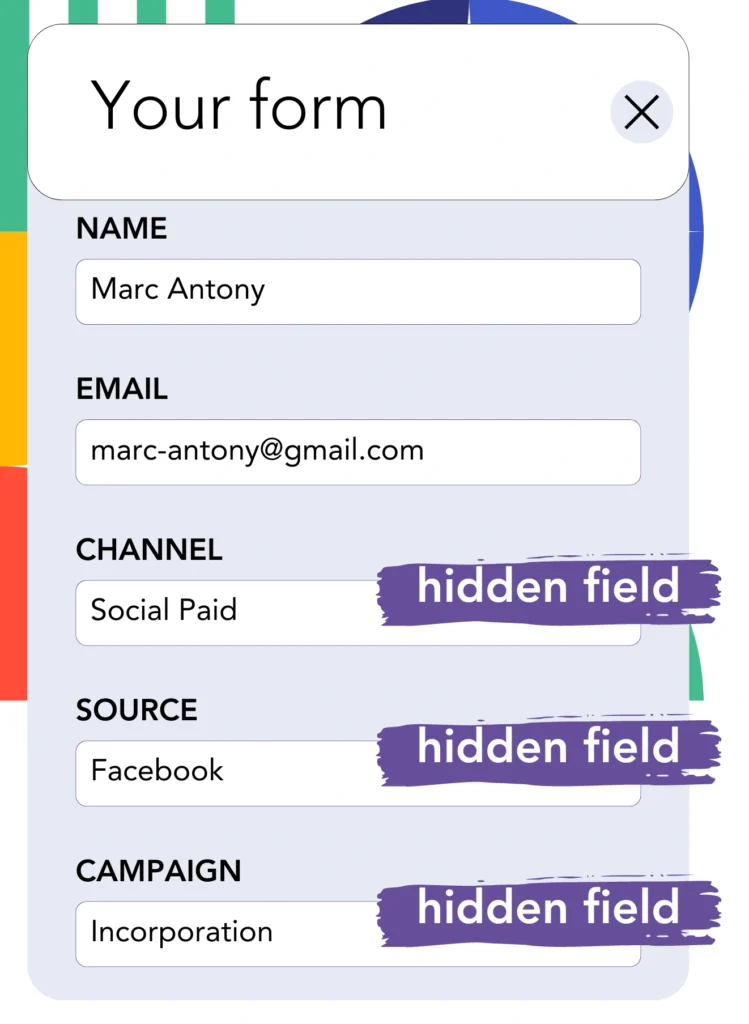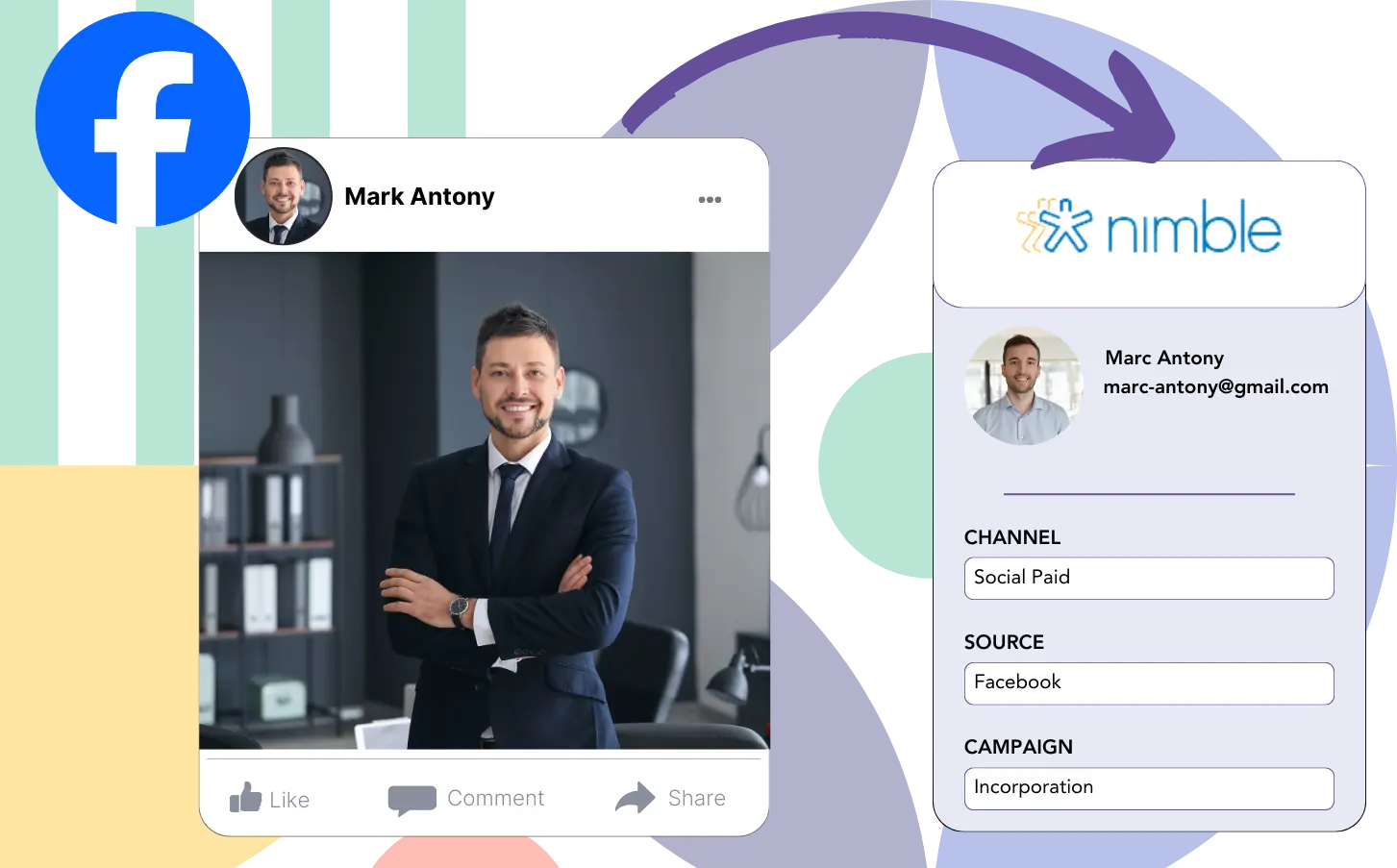You manage lead generation ads on Facebook and direct your leads to Nimble CRM, but you can’t determine which Facebook ad was responsible for each lead, leaving you unaware of the specific ad that led to a sale when the lead converts into a customer.
The absence of this data makes it impossible for you to improve your Facebook ads, as you invest in multiple ads at the same time without knowing which one is generating the revenue.
Leadsource addresses this issue by linking each lead to its respective Facebook ad, including the campaign, ad set, audience, and specific ad.
This article will guide you on how to attribute each lead to a particular Facebook ad, campaign, ad set, and audience.
Let’s get started!
Capture Facebook ads in Nimble CRM
Step 1: Add Leadsources in the head tag of your website

Sign up to Leadsources.io, and benefit from our 14-day free trial.
Add the Leadsources tracking code in the head tag of your site – follow this easy step-by-step guide.
Step 2: Add the UTM parameters to your Facebook ads campaigns

Add the UTM parameters you wish to monitor to your Facebook campaigns.
For instance, you can monitor the campaign, ad set, audience, and ad with these UTM parameters:
- UTM_source=facebook
- UTM_campaign=campaign-name
- UTM_term=ad-set-name
- UTM_content=ad-name
Leadsources collects all lead source information, such as channel, landing page, and subfolder, even without UTM parameters, ensuring comprehensive insight at the lead level.
Step 3: Add the hidden fields in your form

To enable Leadsources to store lead source data, you must create hidden fields in the form on your landing page.
When a new lead submits your form, Leadsources automatically populates the hidden fields with the Facebook ads data.
Consult our comprehensive guide on how to add hidden fields to your form for completing the setup.
Step 4: Capture the Facebook ads data in Nimble CRM

When users click on your Facebook ads and arrive at your page, Leadsources captures the Facebook ads data, including campaign, ad, ad set, and audience.
Leadsources automatically fills the hidden fields of your form with Facebook ads data.
After the form is submitted, the Facebook ads data, along with your leads, can be automatically sent to Nimble CRM. To achieve this, just connect your form to Nimble CRM.
How does Leadsources work?
By adding the Leadsources tracking code to the head tag of your site, it gathers Facebook ads data such as campaign, ad set, audience, and ad whenever a visitor arrives.
After being captured, the Facebook ads data is saved in the hidden fields of your form. This information can subsequently be sent to your Nimble CRM along with the lead.
Leadsources gathers the following information from visitors:
- Channel
- Source
- Campaign
- Content
- Term
- Landing page
- Landing page subfolder
Leadsources monitors this lead source data even without the use of UTM parameters.
There are situations where you cannot utilize UTM parameters:
- Google Search
- Instagram bio link
- Social media posts
- Etc.
This poses a challenge for many lead source tracking tools, as they depend solely on UTM parameters for lead source data. However, Leadsources continues to track certain lead source data even when UTM parameters are unavailable:
- Channel
- Source
- Landing page
- Landing page subfolder
Consequently, Leadsources offers lead data tracking across all channels, setting it apart from other tools:
- Organic Search
- Paid Search
- Organic Social
- Paid Social
- Referral
- Affiliate
- Display Advertising
- Direct Traffic
Leadsources automatically sorts your traffic by channel, resulting in a clean dataset.
With Leadsources, you can establish strong lead source tracking across all channels in a centralized location.
How to run performance reports
With Facebook ads data now tracked in Nimble CRM, you can generate various performance reports, including:
- Leads by channel
- Leads by campaign
- Leads by ad set
- Leads by audience
- Leads by ad
- Leads by landing page
- Leads by landing page subfolder
This allows you to assess and modify your Facebook ads budget with greater precision.
Let’s explore the various types of reports you can create.
Lead performance reports
These reports illustrate the number of leads generated by:
- Channel
- Campaign
- Ad set
- Audience
- Ad
- Landing page
- Landing page subfolder
Example #1
Export data from different channels such as SEO, PPC, and email to generate a report titled “Leads by Channel.”

Example #2
Once you identify the best-performing channel, such as Facebook ads, you can concentrate on it to see the number of leads generated by each campaign.

Example #3
By identifying the top lead-generating campaign, you can discover which specific audience, ad set, or ad is driving those leads.

Sales performance report
Identifying the ads and keywords that generate the most leads is useful, but do they also contribute to your revenue?
Transmitting your form data to Nimble CRM enables the creation of comprehensive sales performance reports.
Example:
| Channels | Search Paid | Social Paid |
| Leads | 50 | 75 |
| Sales | 5 | 6 |
| Average order value | $150 | $100 |
| Revenue | $750 | $600 |
Upon reviewing the performance of your Google and Facebook ads, you found that Social Paid ads generated more leads than Search Paid ads.
After several weeks of analysis, you notice that the Search Paid channel produced more revenue despite having fewer leads than the Social Paid channel, leading you to decide to increase the budget for Search Paid campaigns.
LeadSources tracks the source of each lead in Nimble CRM, whether they come from ads, organic search, social, email, etc. and syncs that data with each submission. See the full breakdown on the lead source in Nimble CRM page.

